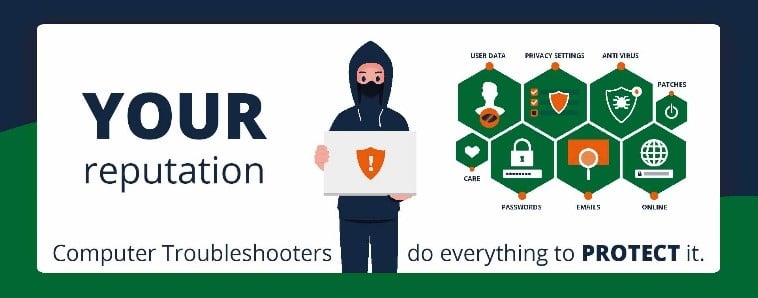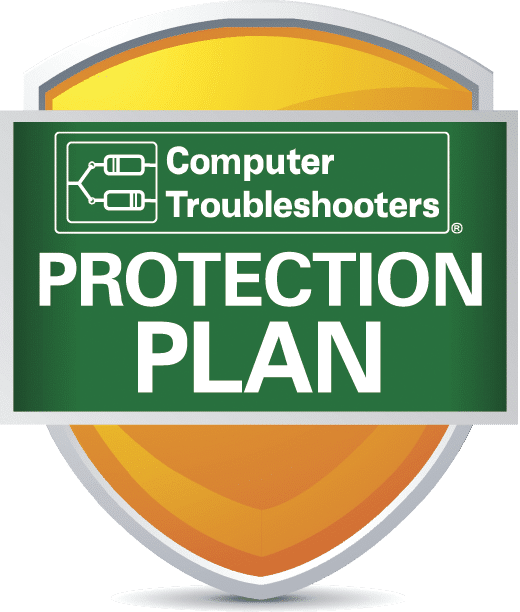IT Security Solutions
Remove the Cyber Threat Risk

The Threat Reality
It is not a case of will a business be attacked but a case of when. A business can expect that attack is likely to include malware, and in more than two-thirds of these incidents this is distributed by malicious email links and attachments.
Our IT Security Solutions are aimed at prevention and protection from such an attack. Adopting a multi layered approach and implementing identified best practices (The Australian Signals Directorate’s Australian Cyber Security Centre (ACSC) Essential Eight Maturity Model) underpin the CT solution options.
Key benefits to the SME are reduced headaches knowing you are prepared for an attack; the approach of prevention means less impact if attacked and earlier detection meaning less disruption to the SME.
The CT Security Solution Elements
Evaluate: Start with an assessment that allows the identification of the threat prone areas of your business, and identifies the list of required actions to minimise and reduce the areas of weakness.
Adopt and Apply an agreed plan of action that is implemented based around preventing malware running, the capacity to limit the extent of an incident and finally, to recover data quickly. Our base solution is a protection plan which can be extended to a fully managed solution covering all your IT needs.
Adoption means ensuring that your staff have a culture of cyber awareness. Initial training and ongoing training can be provided for all staff. Make them aware and confident in your business’s cyber security practices.
Ongoing Monitoring enabling a constant review of the effectiveness of the solution and of the practices implemented, permitting modifications to be made to ensure a continued high level of protection.
A CT Managed Protection Plan options include:
- Anti-Virus software
- Scan management
- Patch Management
- Maintenance Monday (basic tasks such as temp file removal, defrag)
- Daily monitoring
- Remote support
- Data backup plus an option of office 365 data backup
- Email security monitoring
- User access and administrative privileges
- Password policy compliance management
Handy Hints
- Ensure passwords are strong and secure, use Multi factor authentication where possible.
- Regularly change passwords, implement a policy at the network level that forces staff to change.
- Remove system access from people who no longer need it, limit access to only those that need it to perform their role.
- All devices are updated with the latest security updates and regular scans for malware are run.
- Implement a No USB or external hard drives to be used without clearance and a scan for malware being performed.
- Train staff in identifying phishing and ransomware emails. Ensure your software will not allow you to download a file or open a file without it being scanned for malware.
- Avoid transacting online when using a public or complimentary wi-Fi.
- Create a VPN when using a public Wi-Fi.
- Be vigilant about what you share on social media- try to keep personal information private.
IT systems of all businesses are constantly exposed to external threats from malware, viruses and theft attacks caused by ransomware and phishing. For users, spam filters, remote access, and policies need to be maintained.
TAKE CONTROL & MAKE SURE YOUR BUSINESS IS PROTECTED with a CT Business Security solution.
Today’s business environment means there will always be security threats to your business. There are news reports every day about security breaches, stolen information, hackers, and viruses. It is your responsibility to your clients and to your business to make sure you are taking all the necessary steps to protect confidential, sensitive, or critical data. That’s where an initial discussion with your local Computer Troubleshooter can help you assess your current level of risk and the effectiveness of your solution.
Some Australian statistics:
- 43% of all cybercrime targets small business
- Annually, cybercrime costs the Australian economy more than 1bn
- 33% of businesses with fewer than 100 employees are not taking proactive measures against cyber security breaches
- SME’s rate cybercrime as the 3rd biggest risk to their business
- 4 out of five SMEs recognise that the risk of their business becoming a victim of cybercrime is increasing
Source Cyber Aware National Report, released in November 2017.


Cyber Attacks Basics
Email phishing:- Attempts to trick the user by a hoax email enticing the user to click on a dangerous link or providing personal or financial information to an unauthorised source.
Malware:- Malicious or intrusive software, including Viruses, Worms, Trojans, Ransomware, spyware and adware.
Ransomware:- Hijacking of your files and locking you out of your system. Asking for a payment (ransom) when paid gives access back to you.
Denial of service:- Using a network of computers to send requests to your system to overload it so it becomes unavailable or breaks.
Watering hole attack:- Setting up a fake (or compromised) website you are known to go to and then using it to infect visiting users.
